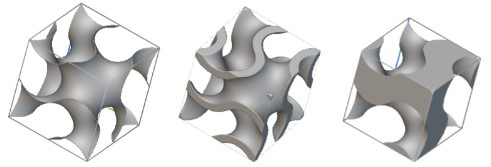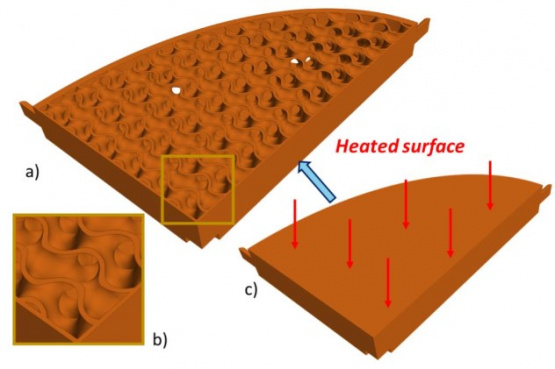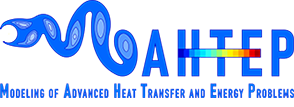Cooling system based on Triply Periodic Minimal Surfaces for a mirror inserted in the trasmission line of fusion reactor ECHR systems
Activity carried out by: Eleonora Gajetti (tutored by Prof. Laura Savoldi)
Objective of the activity: Investigate the use of Triply Periodic Minimal Surfaces as enhanced heat removal systems for a mirror inserted in the transmission line of an Electron Cyclotron Resonance Heating (ECRH) for a fusion plasma.
Framework of the activity:
In the context of nuclear fusion, there is the need of auxiliary heating during at least the start-up of the plasma, in order to reach favorable fusion conditions. Among the methods to provide this power to the plasma, microwaves can be used (ECRH) [1]. As the microwave facility cannot be located close to the plasma a transmission line for the correct supply of the microwaves to the plasma requires to be designed. In the transmission line are present reflecting mirrors which need to be actively cooled to withstand the heat load coming from the microwaves, neutrons and the plasma, thus preventing the deformation of those mirrors from their ideal shape.
With the emerging of Additive Manufacturing in the last decades, several complex structures not feasible with the traditional manufacturing became realizable. Among those, Triply Periodic Minimal Surfaces (TPMS) are periodic, non-self-intersecting structures, generated by combinations of sines and cosines in the 3D space. They have been invented by Schwartz and Neovius in the late XIX century. Then, many other surfaces have been discovered by Schoen at the end of the XX century. Those TPMS provide a huge surface to volume ratio, thus being very attractive for thermal applications due to their low pressure losses and high heat exchange area. Different topologies of TPMS can be achieved by playing with trigonometric functions: one of the most employed and studied so far is the Gyroid structure, depicted in Figure 1. Those structures, repeated many times to cover the whole cooling domain, might be very effective in the heat removal by forming a structured porous medium.

Figure 1. Example of TPMS unit cell (Gyroid).
The aim of this work is the design of cooling systems for a beam-splitter mirror using TPMS and the investigation of different parameters of those structures, such as the unit cell dimension and the employment of two topologies. An example of a cooling system designed with TPMS is depicted in Figure 2.

Figure 2. A quarter of an elliptic mirror, cooled by a gyroid structure. a) A mirror quarter without the top layer, b) detail of the gyroid, c) a mirror quarter with the indication of the heat flux
References:
[1] V. Erckmann and U. Gasparino, “Electron cyclotron resonance heating and current drive in toroidal fusion plasmas,” Plasma Phys. Control. Fusion, 1994, doi: 10.1088/0741-3335/36/12/001.

